Barbara Gittings' Grave
Introduction
Text-to-speech Audio
Images
Barbara Gittings' grave marker, courtesy of John Shuck on Find A Grave (reproduced under Fair Use)
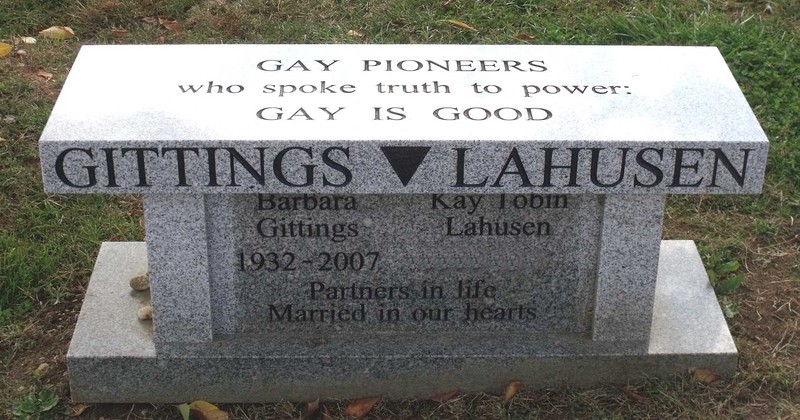
Barbara Gittings picketing outside the White House by Kay Tobin Lahusen, New York Public Library Manuscripts and Archives Division (reproduced under Fair Use)
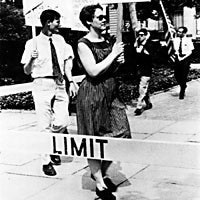
Barbara Gittings portrait, courtesy of katzizkidz on Find A Grave (reproduced under Fair Use)
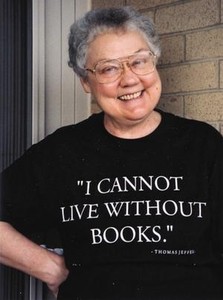
Barbara Gittings at a convention in 1972 by Kay Tobin Lahusen (reproduced under Fair Use)
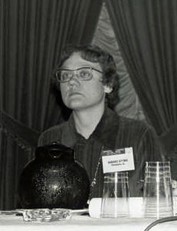
Cover of "The Ladder", May 1966, Vol. 10 No. 08, courtesy of UC Berkeley (reproduced under Fair Use)
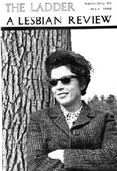
Backstory and Context
Text-to-speech Audio
Barbara Gittings was the daughter of a U.S. diplomat. She was born in Vienna, Austria on January 31st, 1932. She moved to Delaware after the start of WWll. Barbara, while attending high school, was a good student however, was denied entry into the National Honors Society due to character profiling by a teacher. This profiling labeled her as homosexual. Over time, her self-examination led her to sessions with a psychologist who made claims that homosexuality could be “fixed.” This experience inspired Barbara to frequent the library, read, and research. She left home in Delaware at the age of 18 and moved to Philadelphia. Driven to remove inaccurate labeling and claims made by the medical establishments and empower the civil rights of gays, Barbara Gittings walked a life of activism in American civil rights.
In 1958 at the age of 26, Barbara Gittings founded the New York chapter of The Daughters of Bilitis. Along with this accomplishment for which she is known, she edited lesbian magazine The Ladder from 1963 to 1966. It was in 1972 that she fought to change the psychological diagnosis of homosexuality away from illness which often was termed Sexual Inversion. This thinking connected crime, defect, and mental illness with homosexuality. Gittings found that there were no psychologists who were gay involved in the decision-making processes. The awareness that she brought to this problem also brought an increase in APA support to the views presented in this activism. In 1973 the diagnosis given to homosexuality by the psychological community was removed. It was no longer considered an illness. This was a great victory for the GLBTQ community in America, and around the world.
Barbara Gittings died of breast cancer on February 18th, 2007.At the memorial service for her, Matt Foreman, the director of the National Gay and Lesbian Task Force said, "What do we owe Barbara? Everything."
Barbara Gittings is recognized for her political contribution toward equal employment for gays and she marched in protest at the White House and the Philadelphia’s Independence Hall. Her walk through history, a protest of injustices, was one of great strides in the LGBTQ civil rights movement in America.
Sources
Barbara Gittings Delaware Stonewall Democrats. Who is Barbara Gittings?, Delaware Stonewall PAC. Accessed July 19th 2020. http://delawarestonewall.org/who-is-barbara-gittings/.
Belge, Kathy. Barbara Gittings - Lesbian Rights Activist [archived web page], Famous Lesbians and Bisexual Women in History. 2016. Accessed July 19th 2020. http://lesbianlife.about.com/od/lesbiansinhistory/p/BarbaraGittings.htm.
Berwyn United Neighborhood Gay and Lesbian Organization. Barbara Gittings Photos, Accessed July 19th 2020. http://www.bungalo.org/photo_pages/html/barbarapics.html.
Fox, Margalit. Barbara Gittings, 74, Prominent Gay Rights Activist Since ’50s, Dies, New York Times. March 15th 2007. Accessed July 19th 2020. http://www.nytimes.com/2007/03/15/obituaries/15gittings.html?_r=0.
Group for the Advancement of Psychiatry. The Declassification of Homosexuality by the American Psychiatric Association, LGBT Mental Health Syllabus. 2012. Accessed July 19th 2020. http://aglp.org/gap/1_history/#Medicalizing_Sexual_Inversion.
McKern, Bill. Barbara Gittings, Find a Grave. February 24th 2007. Accessed July 19th 2020. https://www.findagrave.com/memorial/18047727/barbara-gittings.
https://www.findagrave.com/memorial/18047727/barbara-gittings#view-photo=92251175
https://commons.wikimedia.org/wiki/File:Barbara_Gittings_1965.jpg
https://www.findagrave.com/memorial/18047727/barbara-gittings#view-photo=31190002
https://www.nytimes.com/2007/03/15/obituaries/15gittings.html
https://digicoll.lib.berkeley.edu/record/121240?ln=en
